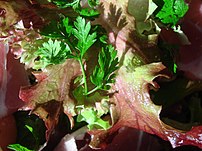[amazon_link asins=’B011HTYX32,B00542A81A,B005428W9K’ template=’ProductCarousel’ store=’finmeacur-20′ marketplace=’US’ link_id=’8453ccb5-587d-11e7-b587-63eb182f6320′]
Botanical Name : Artemisia dracunculoides
Family: Asteraceae
Genus: Artemisia
Species: A. dracunculus
Kingdom: Plantae
Order: Asterales
Synonyms:
*Achillea dracunculus Hort. ex Steud.
*Artemisia aromatica A.Nelson
*Artemisia cernua Nutt.
*Artemisia changaica Krasch.
*Artemisia dracunculoides Pursh
*Artemisia glauca Pall. ex Willd.
*Artemisia inodora Hook. & Arn.
*Artemisia inodora Willd.
*Artemisia nutans Pursh
*Artemisia nuttalliana Besser
*Artemisia redowskyi Ledeb.
*Draconia dracunculus (L.) Soják
*Dracunculus esculentus Garsault
*Oligosporus dracunculiformis (Krasch.) Poljakov
*Oligosporus dracunculus (L.) Poljakov
*Oligosporus glaucus (Pall. ex Willd.) Poljakov
*Artemisia dracunculina S.Watson
Common Names: Russian Tarragon, Tarragon, French Tarragon
Habitat : Artemisia dracunculoides is native to N. America. N. Europe. N. Asia – Siberia. It grows on prairies, plains and dry slopes.
Description:
Artemisia dracunculoides is a perennial herb, growing to 120–150 cm (47–59 in) tall, with slender branched stems. The leaves are lanceolate, 2–8 cm (0.79–3.15 in) long and 2–10 mm broad, glossy green, with an entire margin.It is in flower in September. The flowers are produced in small capitulae 2–4 mm diameter, each capitulum containing up to 40 yellow or greenish-yellow florets. French tarragon, however, seldom produces any flowers (or seeds). Some tarragon plants produce seeds that are generally only sterile. Others produce viable seeds. The plant has rhizomatous roots and it readily reproduces from the rhizomes.
CLICK & SEE THE PICTURES
Cultivation:
Easily grown in a well-drained circumneutral or slightly alkaline loamy soil, preferring a sunny position. Established plants are drought tolerant. Plants are longer lived, more hardy and more aromatic when they are grown in a poor dry soil. Nomenclature is somewhat confused for this species. It is considered by some botanists to be a hardier form of A. dracunculus but with an inferior flavour, whilst some consider it to be part of A. glauca. It is very similar to A. dracunculus, but is more vigorous and hardier, Its leaves have a pungent and less pleasant flavour than that species. Members of this genus are rarely if ever troubled by browsing deer. Special Features: Edible, Fragrant foliage, Not North American native, Inconspicuous flowers or blooms.
Propagation:
Seed – surface sow from late winter to early summer in a greenhouse. When large enough to handle, prick the seedlings out into individual pots and plant them out in the summer. Division in spring or autumn. Very easy, the divisions can be planted out direct into their permanent positions f required. Basal cuttings in late spring. Harvest the shoots when 10 – 15cm long, pot them up in a greenhouse and plant out when well rooted. Very easy.
Edible Uses:
Leaves – raw or cooked. The N. American Indians would bake the leaves between hot stones and then eat them with salt water. The leaves can also be eaten raw in salads but are inferior to A. dracunculus (Tarragon). The flavour is said to improve as the plant matures. Seed – raw or cooked. An oily texture. The seed is very small and fiddly to use.
Tarragon is one of the four fines herbes of French cooking, and is particularly suitable for chicken, fish and egg dishes. Tarragon is the main flavoring component of Béarnaise sauce. Fresh, lightly bruised sprigs of tarragon are steeped in vinegar to produce tarragon vinegar.
Tarragon is used to flavor a popular carbonated soft drink in the countries of Armenia, Azerbaijan, Georgia and, by extension, Russia, Ukraine and Kazakhstan. The drink, named Tarhun (Armenian pronunciation) is made out of sugary tarragon concentrate and colored bright green.
In Iran, tarragon is used as a side dish in sabzi khordan (fresh herbs), or in stews and in Persian style pickles, particularly ‘khiar shoor’.
In Slovenia, tarragon is used in a variation of the traditional nut roll sweet cake, called potica. In Hungary a popular kind of chicken soup is flavored with tarragon.
cis-Pellitorin, an isobutyramide eliciting a pungent taste, has been isolated from the tarragon plant.
Chemical Constituents: A. dracunculus oil contained predominantly phenylpropanoids such as methyl chavicol (16.2%) and methyl eugenol (35.8%). Gas chromatography/mass spectrometry analysis of the essential oil revealed the presence of trans-anethole (21.1%), alfa-trans-ocimene (20.6%), limonene (12.4%), alfa-pinene (5.1%), allo-ocimene (4.8%), methyl eugenol (2.2%), bita-pinene (0.8%), alfa-terpinolene (0.5%), bornyl acetate (0.5%) and bicyclogermacrene (0.5%) as the main components
Medicinal Uses:
Antiscorbutic; Diuretic; Emmenagogue; Hypnotic; Stomachic.
The herb is antiscorbutic, diuretic, emmenagogue, hypnotic and stomachic. The fresh herb is eaten to promote the appetite.
Tarragon has an aromatic property reminiscent of anise, due to the presence of estragole, a known carcinogen and teratogen in mice. The European Union investigation revealed that the danger of estragole is minimal even at 100–1,000 times the typical consumption seen in humans. Estragole concentration in fresh tarragon leaves is about 2900 mg/kg
Other Uses: ...Repellent….Both the growing and the dried plant repels insects. Landscape Uses:Container, Seashore.
Known Hazards : Although no reports of toxicity have been seen for this species, skin contact with some members of this genus can cause dermatitis or other allergic reactions in some people.
Disclaimer : The information presented herein is intended for educational purposes only. Individual results may vary, and before using any supplement, it is always advisable to consult with your own health care provider.
Resources:
https://en.wikipedia.org/wiki/Tarragon
http://www.pfaf.org/user/Plant.aspx?LatinName=Artemisia+dracunculoides
Related articles
- Garden Update | Week 1 (amyinthekitchen.com)
- Garden Guide for English Historical Authors: Spring (englishhistoryauthors.blogspot.com)
- Turning Membership Inside Out (socialfish.org)
- The Mysteries of Mustard, with Thanks to the English (gherkinstomatoes.com)
- Add the unexpected to Easter dinner (canada.com)
- Sugar Pine Foundation needs help planting (laketahoenews.net)
- World › Coal plants use enough water to supply 1 bil people: Greenpeace (japantoday.com)
- The PlantSitter smart plant monitor is looking for backing on Kickstarter (technutty.co.uk)
- Add the unexpected to Easter dinner: butter roasted radishes (timesunion.com)
- Power Plant Performance (goinggreenforu.info)




















